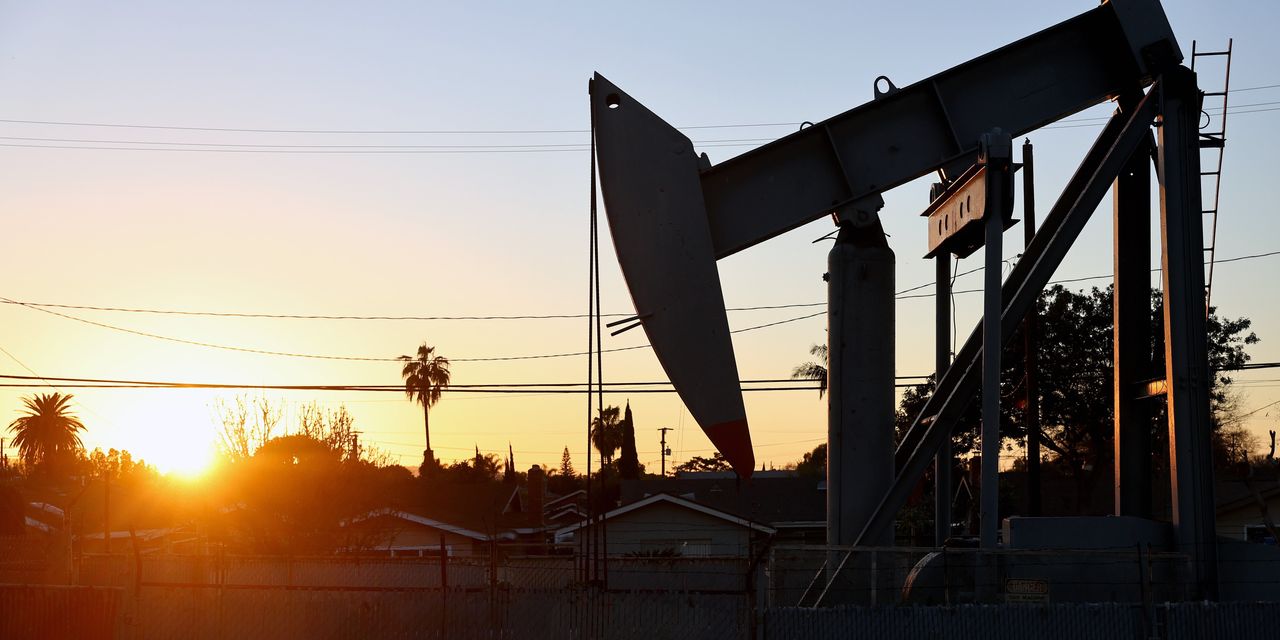Oil futures rose Monday after ending a streak of seven straight weekly gains, with underlying support tied to production cuts led by Saudi Arabia.
Price action
-
West Texas Intermediate crude for September delivery
CL.1,
-0.64% CLU23,
-0.64%
rose 69 cents, or 0.9%, to $81.94 a barrel on the New York Mercantile Exchange after losing 2.3% last week. -
October Brent crude
BRN00,
-0.39% BRNV23,
-0.39% ,
the global benchmark, was up 61 cents, or 0.7%, at $85.41 a barrel on ICE Futures Europe. -
Back on Nymex, September gasoline
RBU23,
-1.78%
declined by 0.9% to $2.7976 a gallon, while September heating oil
HOU23,
-1.30%
shed 0.2% to $3.1546 a gallon. -
September natural gas
NGU23,
+3.14%
added 3.2% to $2.633 per million British thermal units.
Market drivers
WTI and Brent last week fell more than 2%, for the first weekly declines since June. Analysts blamed worries over China’s economy, amplified by the country’s property-sector woes, for part of the decline. An accompanying rise by the U.S. dollar was also seen acting as a headwind for crude and other commodities.
“Overall demand and prices for crude oil are being constrained by slowing global growth and a global manufacturing recession,” Jason Schenker, president of Prestige Economics, said in emailed commentary.
Meanwhile, a consistent run of strong U.S. economic data has raised fears the Federal Reserve may need to push interest rates higher than previously expected and hold them there for longer than previously anticipated, while weekly government data last week showed a pullback in consumer fuel demand and a post-pandemic high in U.S. crude production, analysts at Sevens Report Research said in a note.
“News flow will have to improve substantially for oil to resume the summer rally as hopes for a soft landing have been seen fading while concerns about the global economy are on the rise,” they wrote.
Still, a forecast from the Organization of the Petroleum Exporting Countries reveals an anticipated growth of over 2% in global crude-oil demand for both 2023 and 2024, said Schenker. On the inventory side, the Department of Energy reports that both crude oil and total inventories, which include the Strategic Petroleum Reserve, have decreased on a year-on-year basis, he said.
Crude has rallied this summer in a move attributed in large part to tightening supplies. Saudi Arabia implemented a production cut of 1 million barrels a day in July and has said it would be extended through September.
Read the full article here





